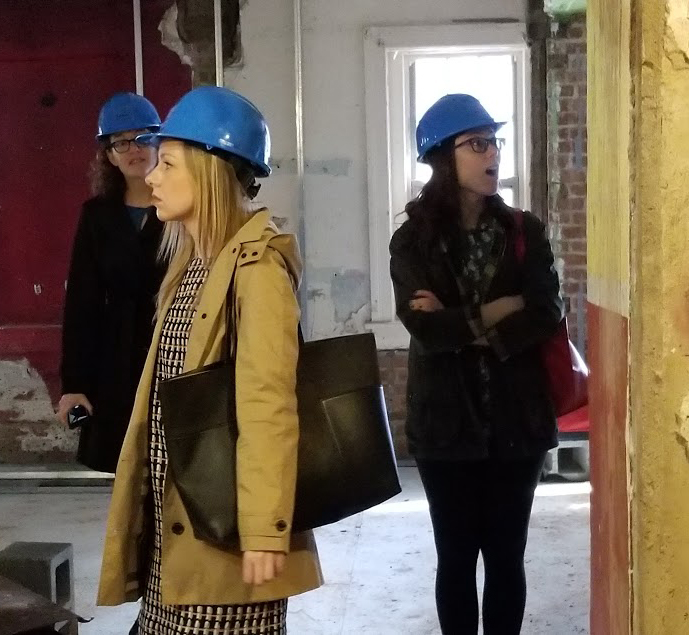With federal budget discussions underway and cuts to critical housing and community development funding threatened, staff from the U.S. House and Senate appropriations committees accompanied leaders from the National Association of Housing and Redevelopment Officials (NAHRO) and the city’s Department of Housing and Community Development (DHCD) on a tour of projects supported by CDBG and HOME program dollars—including Jubilee’s Maycroft Apartments.
Former DC Housing Authority director Adrienne Todman, who now leads crucial NAHRO’s work, connected Congressional staffers seeking to better understand the impact of those two Housing and Urban Development programs with DHCD for the tour.
DHCD Director Polly Donaldson, who arrived with approximately 15 visitors, welcomed them to the Maycroft, where, she said, “Jubilee is creating justice housing. It’s highly affordable, connected to services, and in neighbors like this one, where resources are easily accessible.” She noted that Mayor Muriel Bowser’s administration made a substantial investment in the Maycroft.
“HOME funds and DC Housing Production Trust Fund dollars made these units possible,” said Jubilee Executive Director Jim Knight, who greeted the guests at the Maycroft. Jubilee Housing operates as a Community Housing Development Organization (CHDO) and has used HOME funds to redevelop 272 units of deeply affordable housing in the last decade, including at the Maycroft.
HOME provides loans for communities to fund affordable housing projects. The CDBG (Community Development Block Grant) Program provides resources for a wide range of community development efforts, including D.C.’s highly successful Home Purchase Assistance Program (HPAP), which helps first-time home buyers afford to purchase homes. CDBG funds also support counseling for tenant groups working to purchase their properties through the District’s Tenant Opportunity to Purchase Act (TOPA) as well as small business technical assistance available to entrepreneurs through nonprofits.
The president’s budget could eliminate $5 billion in funding for these two programs.
Guests viewed the Maycroft lobby and a few first-floor residential units. They also walked through the terrace level space. There, Jubilee is building facilities to accommodate its programming for families and for individuals leaving chronic homelessness as well as Martha’s Table’s center for early childhood education and food market, where families can shop for healthy groceries at no cost.
Erin Wilson, deputy manager of DHCD’s Development Finance Division, explained that the public may underestimate the complexity of managing “all the funds required to develop such a comprehensive project and keep it affordable. HOME and CDBG money is critical to the equation.”
Jubilee Vice President of Strategic Initiatives Martin Mellett explained that rents for one-bedroom apartments near the Maycroft average $2,000 a month. By contrast, Maycroft residents who earn 30 percent of area median income could pay only $532 for comparable space.
“This building cost several million dollars, and that was before any renovation,” Mellett said. “Some areas of the country face higher costs for housing than others. But those are costs we must bear or individuals and families with low incomes will all have to live far away from resources and opportunities easily accessible in the city.”
“Keeping D.C. affordable for vulnerable families, even as more people with higher incomes move into the city, is the right thing to do and what makes D.C. so special,” Donaldson said. “The creation, development, preservation, and expansion of highly affordable housing is vital to the city’s success.”
Knight pointed out that a recent study by Raj Chetty, a professor of Economics at Stanford University, found that the most predictive element of a family’s success is the ZIP code where they live. In other words, Knight said, “When families are able to live in neighborhoods where they have easy access to resources and other thriving people, they thrive, too.”
The visit reinforced for all involved that HOME and CDBG funds are potent resources to help make the Nation’s Capital a more just and equitable city.

